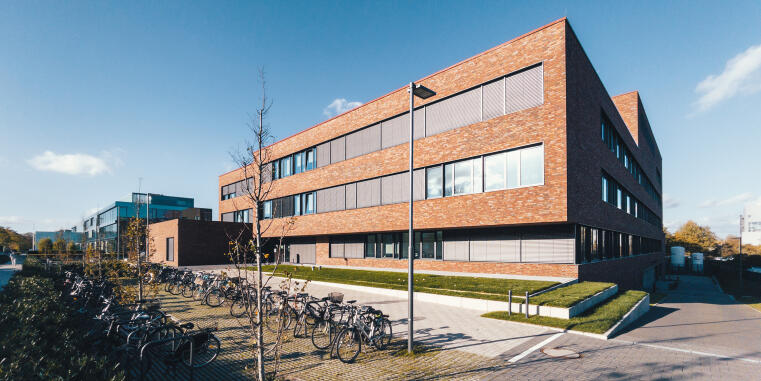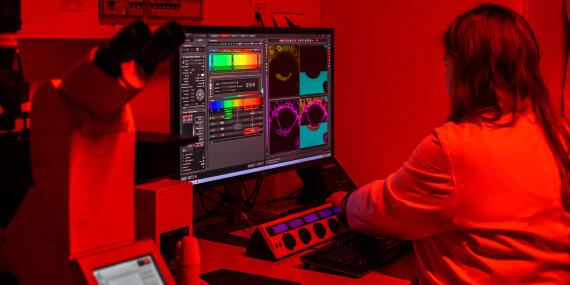Imaging is a central element in our field of research which we use systematically to analyse cellular processes in organisms. Using a variety of imaging technologies enables us to observe various aspects: high-resolution microscopic methods, for example, enlarge minute structures and permit the highly detailed examination of individual cells and their components – however, only a spatial snapshot of the organism can be analysed. Methods of whole-body imaging such as positron emission tomography or magnetic resonance imaging have a lower resolution than microscopes – but, in contrast, they enable the entire organism with its tissues and organs to be depicted.
In order to be able to examine cellular behaviour in various spatial dimensions and over time, we incorporate different imaging technologies into our investigations. We want to integrate information gathered from the individual cellular level up to the level of the entire organism, and we expect that this holistic view will allow us to identify links between cellular mechanisms and the function of organs. This specific “multiscale imaging” methodology is what gives our building its name. It requires new chemical-biological strategies for the labelling of cells that enable us to label the same cell type, or even the same cell, with different signal transmitters – e.g. with fluorescent, magnetic or radioactive molecules – because these generate signals that become visible through different imaging technologies. New challenges are also posed in the evaluation of image data. Here we need to integrate data sets from different imaging techniques to recognise complex patterns in cell behaviour on a holistic level. Mathematical models and the training of artificial intelligence – so-called deep learning – play an essential role here.






































